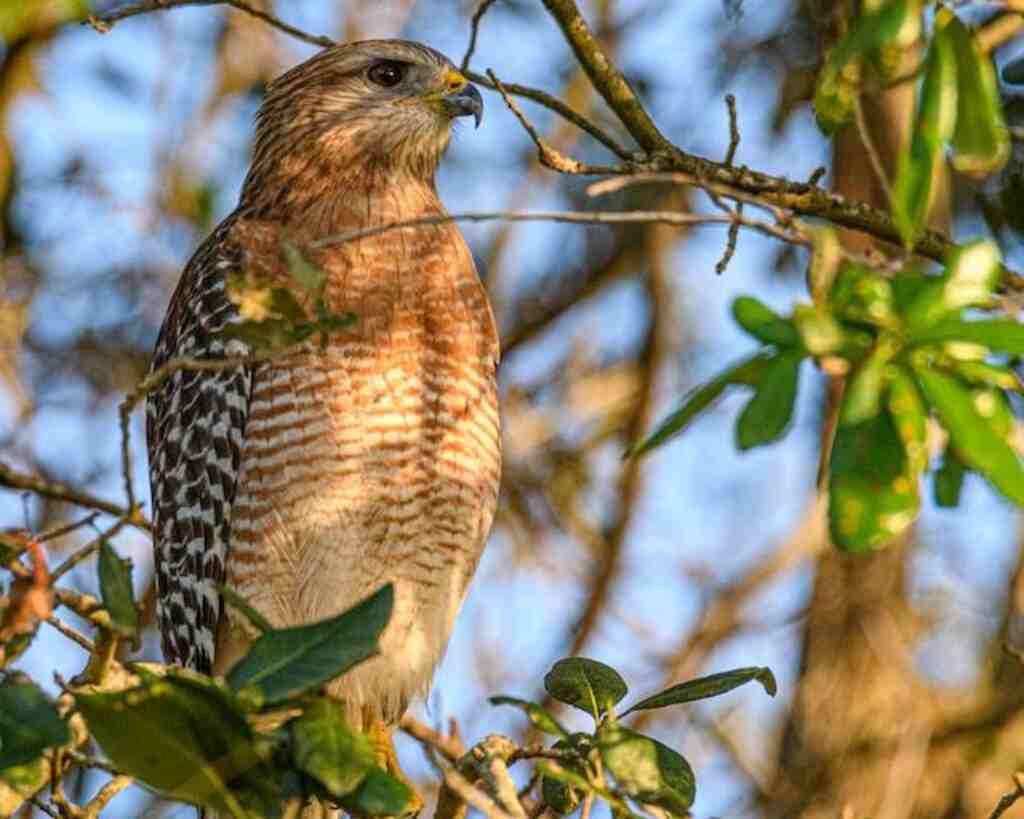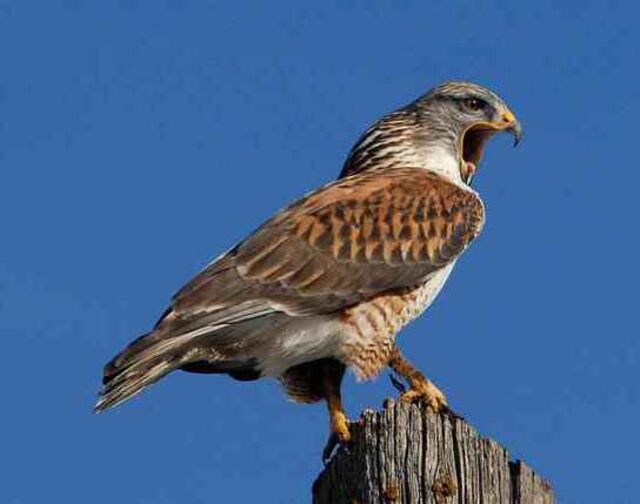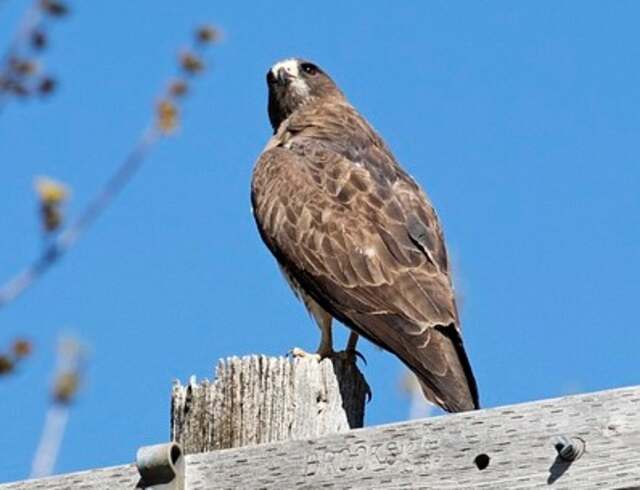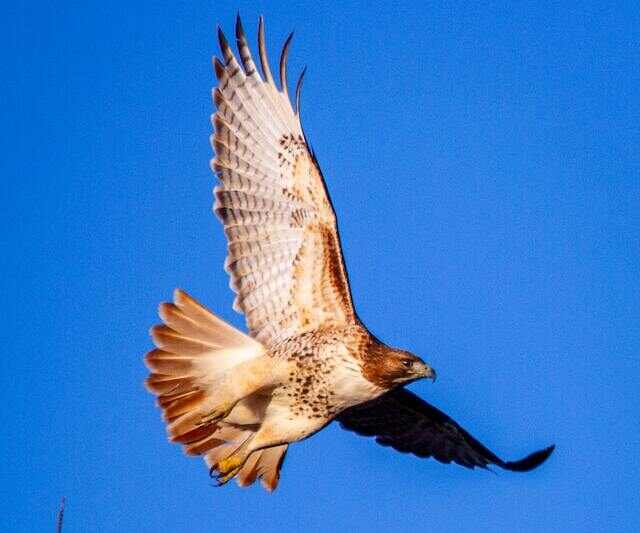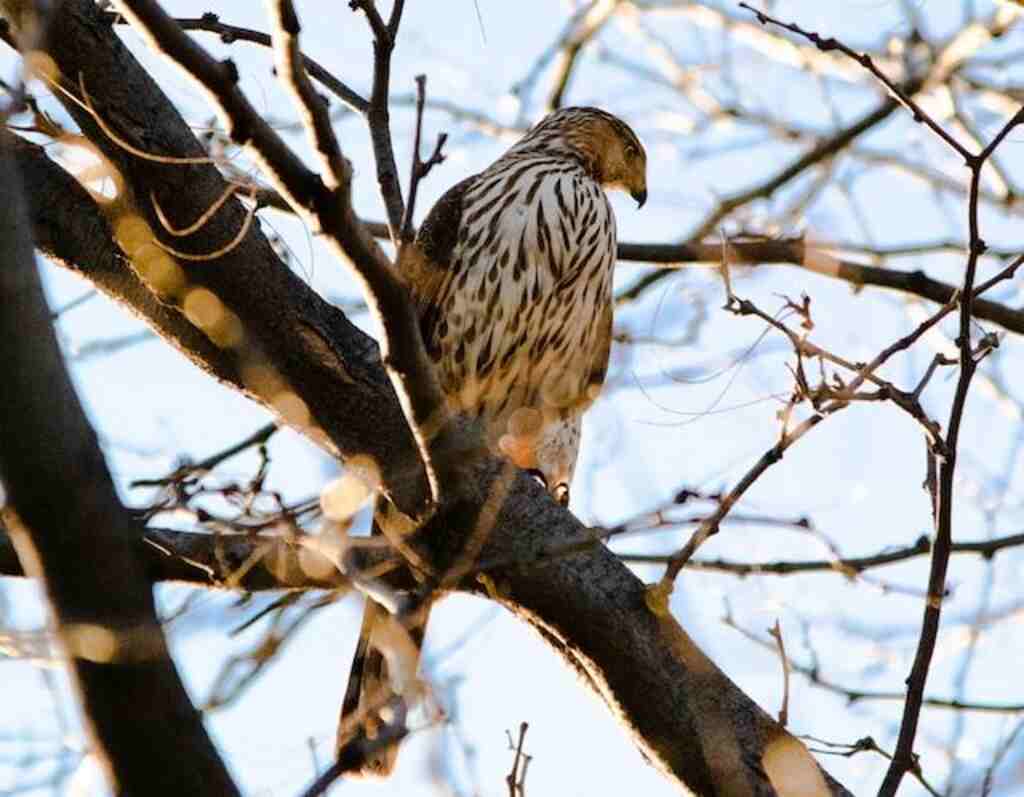“What Do Hawks Eat In The Desert?” Join us on a wild culinary journey as we uncover the secrets behind the appetites of these keen-eyed aerial hunters.
Hawks, with their sharp talons and unrivaled vision, are efficient hunters in various environments. But in the desert, their adaptation skills are put to the test.
From specialized traits to unique survival strategies, we delve into their gustatory adventures. Discover the delectable menu of small mammals, reptiles, and other birds that fuel their desert survival.
Explore the fierce competition for food and the pivotal role hawks play in maintaining ecosystem balance.
Finally, explore the remarkable conservation efforts dedicated to protecting these majestic birds. Get ready for a tantalizing insight into the desert’s culinary landscape!
Table of Contents
- 1 Key Takeaways
- 2 Overview of Hawk Adaptation in Desert Environments
- 3 Importance of Adaptation for Survival
- 4 Types of Hawks in Desert Regions
- 5 What Do Hawks Eat In The Desert
- 6 Small Mammals as a Primary Food Source
- 7 Reptiles as a Food Source
- 8 Insects as a Food Source
- 9 Other Birds as a Food Source
- 10 Competition for Food in Desert Environments
- 11 Role of Hawks in Maintaining Ecosystem Balance
- 12 Conservation Efforts for Hawks in Desert Environments
- 13 Frequently Asked Questions
- 13.1 How do hawks adapt to the extreme temperatures in desert environments?
- 13.2 What is the average lifespan of a hawk in a desert environment?
- 13.3 What are some common predators of hawks in desert regions?
- 13.4 How do hawks in desert environments differ from those in other regions?
- 13.5 What impact do human activities have on the population of hawks in desert environments?
- 14 Conclusion
- 15 Author
Key Takeaways
- Hawks in the desert primarily feed on small mammals such as rodents and jackrabbits, reptiles like lizards and snakes, and insects due to their abundance and adaptability to the harsh conditions of the desert.
- Competition for food in the desert is fierce, and hawks have developed various physical and behavioral adaptations to survive and thrive, including changes in wing shape or size, choosing different hunting times or locations, and using their sharp talons to defend themselves against competitors.
- The presence of hawks in desert ecosystems plays a crucial role in maintaining a balanced food web, as they help control the populations of their prey and prevent overpopulation that may disrupt the delicate balance of the ecosystem.
- Conservation efforts for hawks in desert environments are crucial for ensuring the sustainability of the desert biome and preserving the delicate balance of the ecosystem. Habitat restoration and community education are key strategies for achieving this goal.
Overview of Hawk Adaptation in Desert Environments
The adaptation of hawks to desert environments is a complex and multifaceted subject that involves various physiological, behavioral, and ecological factors.
These birds of prey face numerous challenges in the harsh desert climate, including extreme temperatures, limited water sources, and sparse vegetation.
In order to survive, hawks have developed unique adaptations that allow them to thrive in these conditions.
For example, they have specialized hunting techniques that enable them to locate and capture prey even in the vast expanse of the desert.
They are also able to regulate their body temperature and conserve water through various mechanisms, such as panting and reducing their metabolic rate.
The importance of these adaptations for survival cannot be overstated, as they allow hawks to not only survive but also thrive in one of the most challenging environments on the planet.
Importance of Adaptation for Survival
Adaptation is crucial for survival in harsh environments, such as the hot and arid regions of the southwestern United States where the average annual rainfall in some areas is as low as 3 inches.
Adaptation has been observed in various ecosystems, but it is particularly important in extreme desert conditions where food and water are scarce. Organisms must adapt to these conditions to survive.
However, there are limitations to adaptation in the desert, as extreme heat and lack of water can be too challenging for some.
In other ecosystems, adaptation may allow organisms to thrive in a variety of conditions, but in the desert, it is often a matter of life and death.
Despite these challenges, hawks have adapted well to desert environments, utilizing their sharp vision and strong talons to hunt prey such as rodents, lizards, and snakes.
These adaptations have allowed hawks to survive and even thrive in the desert. The next section will explore the various types of hawks found in these regions and their specific adaptations for survival.
Types of Hawks in Desert Regions
Various species of hawks have been identified in arid regions, each with unique physical and behavioral adaptations that enable them to survive in harsh desert environments.
Desert hawk species, such as the Harris’s hawk, use cooperative hunting tactics to take down prey that may be too large for a single bird.
Other hawks, like the Red-tailed hawk, use their keen eyesight and powerful talons to hunt smaller prey like rodents and lizards.
The Ferruginous hawk, on the other hand, has evolved to hunt larger prey like jackrabbits and ground squirrels, relying on its powerful wingspan and muscular legs to catch and kill its quarry.
Despite their different hunting strategies, all desert hawks share one thing in common: they rely on small mammals as a primary food source.
From the tiny kangaroo rat to the larger black-tailed jackrabbit, these small animals are essential for the survival of desert hawks, ensuring they are able to adapt and thrive in even the harshest desert environments.
What Do Hawks Eat In The Desert
Hawks in the desert have a varied diet that primarily consists of small mammals, such as rodents and rabbits. They are skilled hunters and rely on their sharp vision and agility to catch their prey.
Additionally, desert hawks may also feed on reptiles, insects, and occasionally birds.
Their adaptability allows them to thrive in arid environments, where they play a crucial role in maintaining ecological balance by controlling the populations of small animals.
Small Mammals as a Primary Food Source
Small mammals, such as rodents and jackrabbits, play a crucial role in the survival of desert hawks, as they serve as their primary source of food.
Predator-prey dynamics are at play as hawks use their hunting techniques, such as soaring and diving, to catch their prey.
The table below shows the different types of small mammals that desert hawks commonly feed on.
| Small Mammal | Description |
|---|---|
| Kangaroo Rat | Nocturnal rodent with powerful hind legs for jumping. |
| Desert Cottontail | Small rabbit species found in desert habitats. |
| Pocket Mouse | Mouse-like rodent with fur-lined cheek pouches. |
| Ground Squirrel | Agile squirrel species adapted to desert environments. |
| Packrat | Collects and stores various plant materials in its nest. |
| Jerboa | Long-legged rodent known for its hopping locomotion. |
| Vole | Small, burrowing rodent that feeds on vegetation. |
| Jackrabbit | Large hare with distinctive long ears and powerful hind legs. |
Please note that this is not an exhaustive list, as desert hawks may prey on other small mammal species depending on their specific habitat and availability of prey.
These mammals are adapted to the harsh desert environment and are often found in burrows or crevices to avoid the heat.
Hawks have keen eyesight and can spot their prey from high above, swooping down to catch them with their sharp talons.
This relationship between hawks and small mammals is essential for the balance of the desert ecosystem. However, hawks also feed on reptiles, which will be discussed in the next section.
Reptiles as a Food Source
Reptiles, including lizards and snakes, play a significant role in the diet of many desert predators due to their abundance and adaptability to the harsh conditions of the desert.
The predator-prey dynamics of the desert ecosystem have resulted in many species of reptiles evolving to be quick and agile, making them difficult prey for predators such as hawks.
However, hawks have developed unique hunting strategies to capture these elusive reptiles.
Hawks have specialized beaks and talons that allow them to grab and hold onto their prey while their sharp vision enables them to spot small reptiles from great distances.
Reptiles are also a valuable source of nutrition for hawks as they are rich in protein, vitamins, and minerals.
The nutritional value of reptiles can vary depending on the species, but they are generally high in fat, making them an excellent energy source for predators like hawks.
As we move into the next section about insects as a food source, it is important to note that while reptiles are a significant part of the diet of desert predators, they are not the only option available.
Insects as a Food Source
Insects, with their diverse range of species and adaptations, are a crucial food source for many desert predators due to their abundance and nutritional value.
Insects provide a high protein and fat content, which is essential for predators such as hawks to sustain their energy levels and maintain their health.
Insects are also a sustainable food source, as they reproduce quickly and in large numbers.
Farming practices have been developed to cultivate insects for human consumption, which could also be utilized to provide food for desert predators.
However, it is important to note that not all insects are created equal in terms of nutritional value, and predators must selectively hunt for the most nutritious insects to ensure their survival.
Furthermore, desert insects exhibit adaptations, such as camouflage and burrowing, which make them difficult to catch.
Despite these challenges, insects remain a critical food source for hawks and other desert predators. Moving on to other birds as a food source.
Other Birds as a Food Source
Insects are not the only food source for hawks in the desert, as they also prey on other birds. Hawks are known for their hunting techniques, which involve swooping down from the sky to catch their prey.
They have excellent eyesight and can spot their prey from great distances. Other birds that hawks feed on include doves, quails, and small songbirds.
These birds are often caught in mid-air as they are flying or while they are perched on a tree branch. Hawks are skilled hunters and can catch their prey with great precision.
The competition for food in desert environments is fierce, and hawks must be able to adapt their hunting techniques to survive.
Competition for Food in Desert Environments
Competition for food is a common challenge for predators in desert environments, and hawks are no exception.
Other predators, such as eagles, owls, and snakes, also rely on the same food sources as hawks, which can lead to intense competition.
To survive and thrive, hawks have developed various strategies for adaptation, including hunting during different times of the day, targeting different prey species, and defending their territories against competitors.
Other Predators That Compete with Hawks
Predatory mammals and reptiles, such as coyotes and snakes, are among the other predators that may compete with hawks for prey in desert ecosystems.
Coyote competition may be particularly fierce, as these animals are known to scavenge for food and may even steal prey that hawks have caught.
Snakes, on the other hand, may not compete directly with hawks as they often hunt different prey, but they may still pose a threat to hawks if they encounter each other.
Other predators that may compete with hawks include owls, eagles, and even other hawk species.
Despite this competition, hawks have developed a variety of strategies for adaptation to competition, such as hunting at different times of day or in different locations, or targeting different prey species.
These adaptations allow hawks to continue to thrive in desert environments despite the presence of other predators.
Strategies for Adaptation to Competition
Adaptation to the presence of other predators is a critical component of survival for hawks in desert ecosystems. In order to compete with other predators, hawks have developed both behavioral and physical adaptations.
Behavioral adaptations include choosing different hunting times or locations to avoid competition with other predators, while physical adaptations may include changes in wing shape or size to increase agility and speed.
Hawks may also use their sharp talons to defend themselves against competitors.
These adaptations are important for hawks to successfully find food and avoid being outcompeted by other predators. By adapting to their environment, hawks are able to maintain a balance in the ecosystem.
Without these adaptations, hawks may not be able to survive in the harsh desert environment, which would have a ripple effect on the entire ecosystem.
Role of Hawks in Maintaining Ecosystem Balance
The presence of hawks in desert ecosystems plays a crucial role in maintaining a balanced food web, as they are opportunistic hunters that feed on a variety of small animals such as rodents, lizards, and snakes. Hawk behavior, therefore, has a significant impact on the ecosystem.
One might argue that the elimination of hawks from the ecosystem would not have a significant impact, but studies have shown that their absence can lead to an overpopulation of prey species and ultimately disrupt the delicate balance of the ecosystem.
Hawks play an essential role in controlling the populations of their prey, and their presence helps prevent the overgrazing of vegetation by herbivores.
Additionally, hawks are also important indicators of the health of the ecosystem, as their absence can signal a disturbance in the food web.
Therefore, conservation efforts for hawks in desert environments are crucial for maintaining the delicate balance of the ecosystem and ensuring the sustainability of the desert biome.
Conservation Efforts for Hawks in Desert Environments
Conservation efforts for maintaining the presence of hawks in desert ecosystems are a crucial step towards preserving the delicate balance of the food web and ensuring the sustainability of the desert biome.
Habitat restoration is a key strategy for preserving and enhancing the habitats of these birds.
This involves the restoration of degraded areas, including the removal of non-native species and the planting of native vegetation to provide a suitable habitat for the hawks.
Community education is also essential to promote awareness about the importance of hawks in the ecosystem and the need for their conservation.
Educating the public about the benefits of preserving natural habitats and reducing human impact on the environment can help to promote a culture of environmental stewardship and ensure the long-term survival of these magnificent birds.
By implementing these conservation strategies, we can ensure that hawks continue to play their crucial role in maintaining the balance of the desert ecosystem for generations to come.
Frequently Asked Questions
How do hawks adapt to the extreme temperatures in desert environments?
Hawks in the desert have adapted to the extreme temperatures through various strategies such as soaring at high altitudes and reducing their metabolic rate. Their hunting techniques involve using sharp talons and keen eyesight to catch prey.
What is the average lifespan of a hawk in a desert environment?
The average lifespan of a hawk in a desert environment varies among species. Factors such as Hawk breeding habits and migratory patterns influence their survival. Desert hawk hunting techniques and prey selection play a crucial role in their adaptation to the harsh environment.
What are some common predators of hawks in desert regions?
Predator-prey dynamics play a crucial role in regulating hawk populations in desert regions. Common predators of hawks include eagles, owls, and coyotes. Hawks primarily feed on small mammals, reptiles, and insects, which are abundant food sources in their environment.
How do hawks in desert environments differ from those in other regions?
Desert hawk adaptations vary from those in other regions due to environmental factors. These include hunting strategies such as soaring at high altitudes to locate prey and the ability to survive without water for extended periods. These adaptations allow them to thrive in arid conditions.
What impact do human activities have on the population of hawks in desert environments?
Human activities such as hunting and habitat destruction have a significant impact on the population of hawks in desert environments.
Conservation efforts and strict hunting regulations are necessary to prevent further declines.
One interesting statistic is that the population of ferruginous hawks in the Sonoran Desert has decreased by 50% in the last 20 years due to habitat loss.
Conclusion
Hawks are remarkable birds of prey that have adapted to thrive in desert environments. Their survival in these harsh habitats is dependent on their ability to adapt to limited resources, such as food and water.
Hawks primarily feed on small mammals, reptiles, and other birds, and must compete with other predators for these resources.
Despite these challenges, hawks play an important role in maintaining ecosystem balance.
Given the importance of hawks in desert ecosystems, it is concerning that many species are facing threats to their survival.
Habitat loss, climate change, and hunting are among the factors that contribute to the decline of hawk populations.
In fact, according to a recent study, over 30% of hawk species are at risk of extinction. This statistic highlights the urgent need for conservation efforts to protect these birds and their habitats.
In conclusion, hawks are fascinating creatures that have adapted to survive in desert environments.
Their ability to thrive in these harsh habitats is dependent on their access to food and water, and their role in maintaining ecosystem balance is critical.
However, many species of hawks are facing threats to their survival, and urgent conservation efforts are needed to prevent their extinction.
The statistic that over 30% of hawk species are at risk of extinction underscores the importance of these efforts and serves as a call to action for conservationists, policymakers, and the general public.

